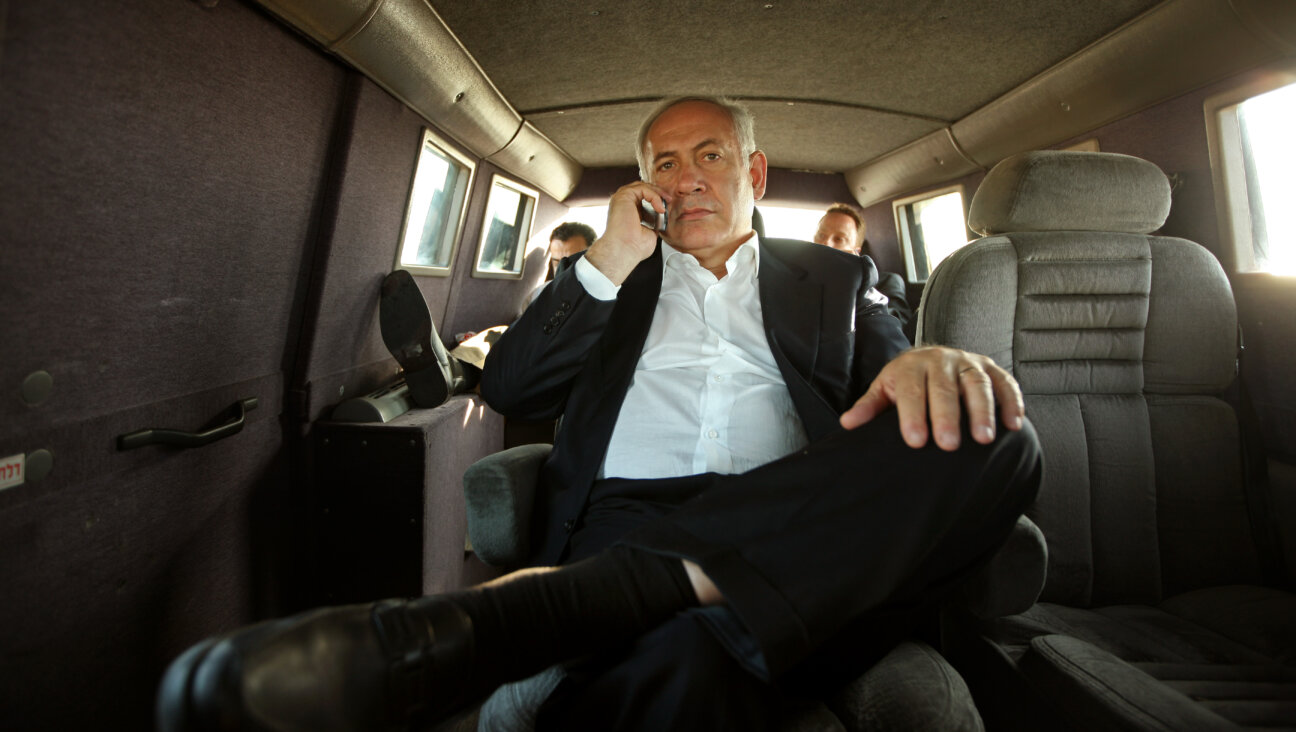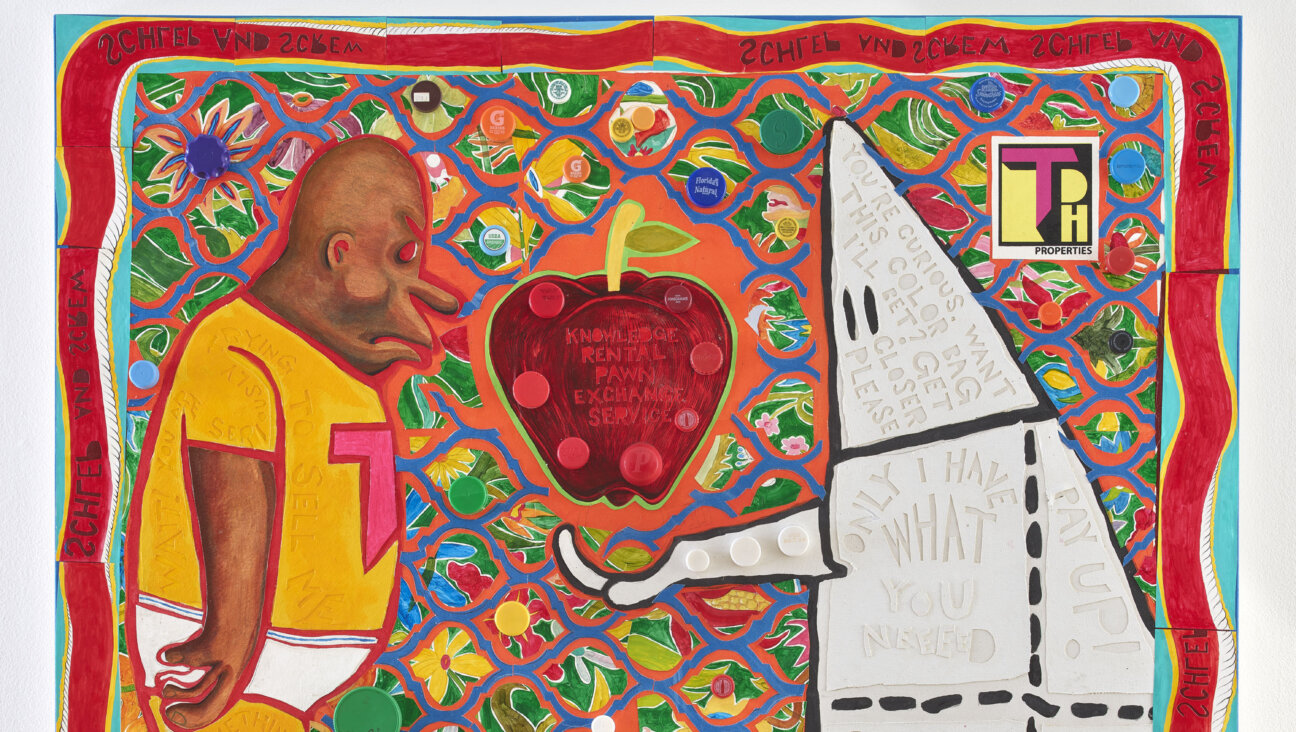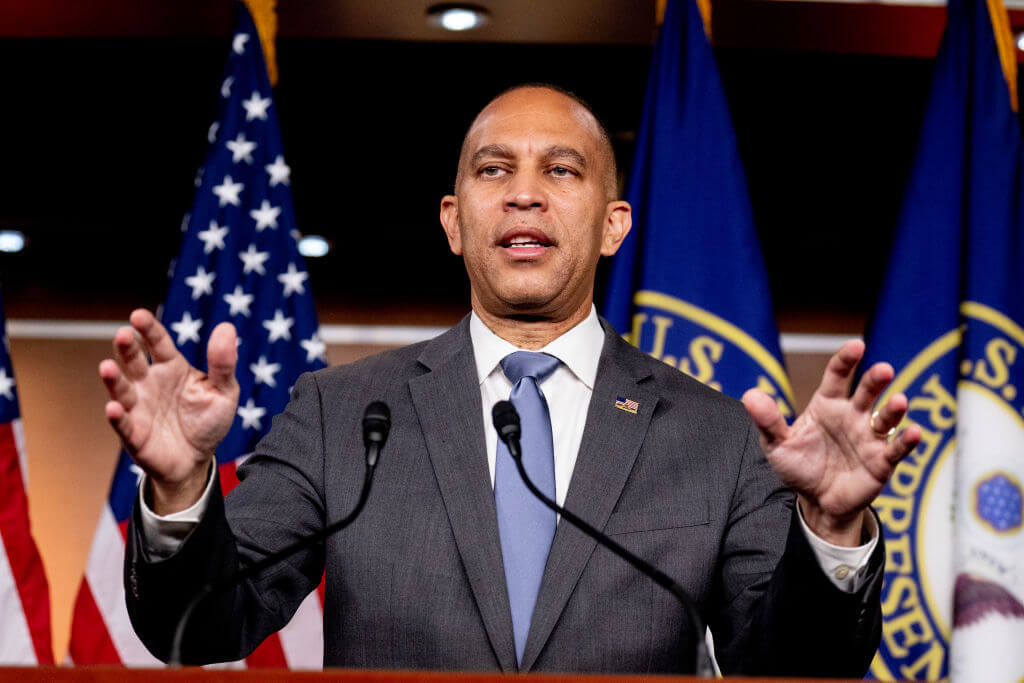What Was a Nice Jewish Girl Like Her Doing in a Church Like This?


Image by Kurt Hoffman
At the border of the town where I grew up there is a circle that straddles Maryland and the District of Columbia and is ringed by a band of churches. Catholic, Protestant, Presbyterian, Baptist, Methodist. All are represented here, I remember being told many times.
Many of the girls in my town wore the Catholic school uniform: short plaid skirts, saddle shoes (scuffed) and stiff white shirts with peter pan collars. Their uniformity was thrilling, as fascinating as living in an apartment might be. Or having braces and a broken leg. Or talking quietly in public.
I was sent to a public elementary school deeper into Maryland that offered students the unusual aspect of choice by allowing us to insert a piece of paper into a pocket on a board of pockets. My parents thought this kind of choice was innovative and essential though the school was not near my house and so my friends were not near either. They could be patrols after school, standing guard at barricades, ushering young children across crowded streets, their white painters’ pants and velour V-neck shirts bisected by the neon orange of a patrol belt and, if one was lucky, a gleaming badge. I was bussed home. And so, one of those girls in a uniform, Meghan, became someone with whom I wandered the neighborhood backyards picking (poisonous!) berries, ding dong ditching the neighbors, playing dress up and making those pre-caller ID prank calls: “Is your refrigerator running? You better go catch it!”
Meghan had two sisters, Kathleen and Wendy, and a brother Tim who had already broken his collarbone seven times but was still allowed to skateboard, which my father found to be every bit as preposterous as Nixon before, during and after his impeachment. I, on the other hand, was not allowed to so much as lay a finger on a board. Just to hear the scrape of a wheel on the smooth asphalt of the hill rising before our houses caused the kind of longing I had not yet known. Was this Jewish? The no skateboarding and the longing? Looking back, I can see that yes, it was.
Meghan went to a Catholic school at Blessed Sacrament, run by nuns. The cruelty of nuns I’d heard about also piqued an intense curiosity. Were Meghan’s knuckles being rapped with a sharp ruler? Was she forced to stay after school to write: “I will not pull Katherine O’Reilly’s hair” over and over? Or was she a girl who was patted on the head and cared for by the sisters in the vein of the Parisian Madeline? Was Meghan asked kindly to beat erasers against the school outside? Was that school a church?
Fairy tales is what I mean. World building. I knew I was Jewish. We were what I think is still referred to as High Holiday Jews. I knew there was a difference between Meghan and me and less of a difference between the Rosenbaum’s son across the street and me but I couldn’t and didn’t name it. We were also poinsettia and candy cane and Christmas card Jews. Though my mother would not allow a Christmas tree in our house — ever — my father, who had grown up under the winking St. Nicholas light of Nordic Minneapolis, embraced the holiday. So how could I possibly name our difference? Meghan and I were girls and we lived in the same town, whose founder was an “avowed racist.” He excluded families from purchasing property due to race (“A negro…”) or ethnicity (“any persons of the Semetic [sic] race”) until the second half of the 20th century. We had moved there in ’73.
At 8 years old, Meghan and I picked our Mrs. Gunthry’s lilacs and then played four square at 9 and then kick the can at 10. Soon there would be bar mitzvahs. Those mornings we would make our way along the Circle, through its fortress of churches, to the land where synagogues stood tall. And we would go back again for evenings of big lavish affairs at the Decatur House or the Cosmos Club in the District.
But before all that was fairy tales. Who does not want to walk inside the world of a book, that magical haunted wood? When Meghan and her enormous family invited me to church with them, my ecumenical parents thought it would be a great idea. I can imagine the late-night discussion now: My parents must have remarked how interesting it would be to gain a view onto another world, and my father must have added that a Catholic mass was a very beautiful thing.
And I imagine it was. I was nervous as we slid into the pews, which were the same as those in a Jewish house of prayer, but everything else was different from those brief, intense moments spent in synagogue, light shining in, a diffused light, the singing cantor, the Hebrew prayers, the Torah carried through the aisles to be touched, the sharp attention to the dead. In here was all stone and darkness but for the sun shining through the stained glass, shining down through Jesus’s body, the rays of light hitting the altar. The priest was dressed all in white. And he spoke English. And the prayers were in English. I understood everything.

Wearing Something Red: The author, circa 1978. Image by Courtesy of Jennifer gilmore
I was inside. I sat in between Meghan and her eldest sister, Kathleen, who used Tickle deodorant and strawberry Lip Smackers and wore tube tops and overalls all summer long. How I yearned to be Kathleen. She sat next to Wendy, whose upper lip was always chapped from the way she wiped her snot away with her open palm, and then there was Timothy, upright and for once unbroken, and next to him, Mr. Farrell, who worked for President Ford. The previous month he had gotten us special tickets to the White House where, after we pulled up in our wood-sided station wagon and trundled inside, a man unhooked the red velvet rope, ushering us inside the oval office. I was supposed to be amazed, I knew then, but it was only a regular office. Great things happened there, I knew as well, but I couldn’t feel them, close as I was to the place where all those bills were signed and vetoed and so many grand decisions about all our lives were made.
I wanted braces and a broken leg and I wanted a mother who stayed home making babies and bologna sandwiches and I wanted a plaid skirt and a blazer, a thumbprint of charcoal on my forehead late in winter, and I wanted to wear deodorant and platform sandals with pretty flowers and I wanted to skateboard and to be quiet in public. This was the house of that.
And so when the people rose, filing to the back of the church, I stood with them. Megan knelt before me, her fawn-like legs folded before the priest. And then I knelt; I felt the wood mark the bones of my knees. I bowed my head and felt myself do penance for all things in that moment. The crank calls. Stealing Mrs. Gunthry’s lilacs. The priest slipped a thin disc of bread from his dry hand into my mouth and I felt it spread and dissolve across my tongue.
Why had no one stopped me? Why hadn’t Mr. or Mrs. Farrell held out a hand to block my entrance, like the patrols at my school, or the way my mother had when we drove together and she stopped suddenly (which was often) as we went around Chevy Chase Circle waiting for a break in traffic to finally get off it and into the District where we shopped for groceries and went to the movies and went downtown to the museums and the monuments and my parents’ offices. We had to pass those churches to get to almost everything we did then.
But none of the Farrells stopped me. What could they have possibly been thinking? Did I know? I think I did know that what I was doing was transgressive but I could not name how or why. I would later feel this way about sneaking drinks at the bar at the Decatur House during a bar mitzvah, we girls in shimmery Gunne Sax, our hair pinned back, all of us light and gauzy and swigging rum on the benches of Lafayette Park. This was a religious event, or an outtake of one, but there was no religion in it for me then. There was a big tent and an old old house and the kind of money we didn’t see much of in D.C. back then. There was so much of it we had to cross the border from Maryland to celebrate it. Or even later, farther downtown, where I went to places where you could see music and watch people slam dance and throw up in bathrooms, thick with graffiti, places that are long gone now, also churches to so many, places I visited but never belonged in. Or belonged to.
When do we become accountable?
I have always only been a visitor. This is the body of Christ, the priest said. This is the blood of Christ.
Well okay! But is it? How could it be? What is a symbol and what is a representation and what is the actual thing, the thing that you walked with down the aisle, burdened by, the scrolls you could reach out and touch? What, then, is a metaphor?
There is a fountain in the center of Chevy Chase Circle, restored now, but then, when Ford took office after Nixon humiliated us all, it was mostly broken. I stared at it a million times. Half my life that thing was broken but it was working the first time I drove on my own around that circle. I had just turned 16. I was new to driving. I circled and circled. I couldn’t get off. All the churches, steeples rising. The stories of nuns. The stories of writing on the blackboard after school, of singing and choir and church retreats deep in the woods, the secret circle of a secret religious life. I was next to everything. I was in Maryland. Our town still didn’t let Jews into its country club. There were borders all around us.
Again and again, I circled the dry fountain. And then, finally, I swerved off. I got over the line and I was in the District now.
I made it through.
Jennifer Gilmore is the author of “Golden Country,” “Something Red,” and “The Mothers.”
A message from our CEO & publisher Rachel Fishman Feddersen

I hope you appreciated this article. Before you go, I’d like to ask you to please support the Forward’s award-winning, nonprofit journalism during this critical time.
We’ve set a goal to raise $260,000 by December 31. That’s an ambitious goal, but one that will give us the resources we need to invest in the high quality news, opinion, analysis and cultural coverage that isn’t available anywhere else.
If you feel inspired to make an impact, now is the time to give something back. Join us as a member at your most generous level.
— Rachel Fishman Feddersen, Publisher and CEO






















